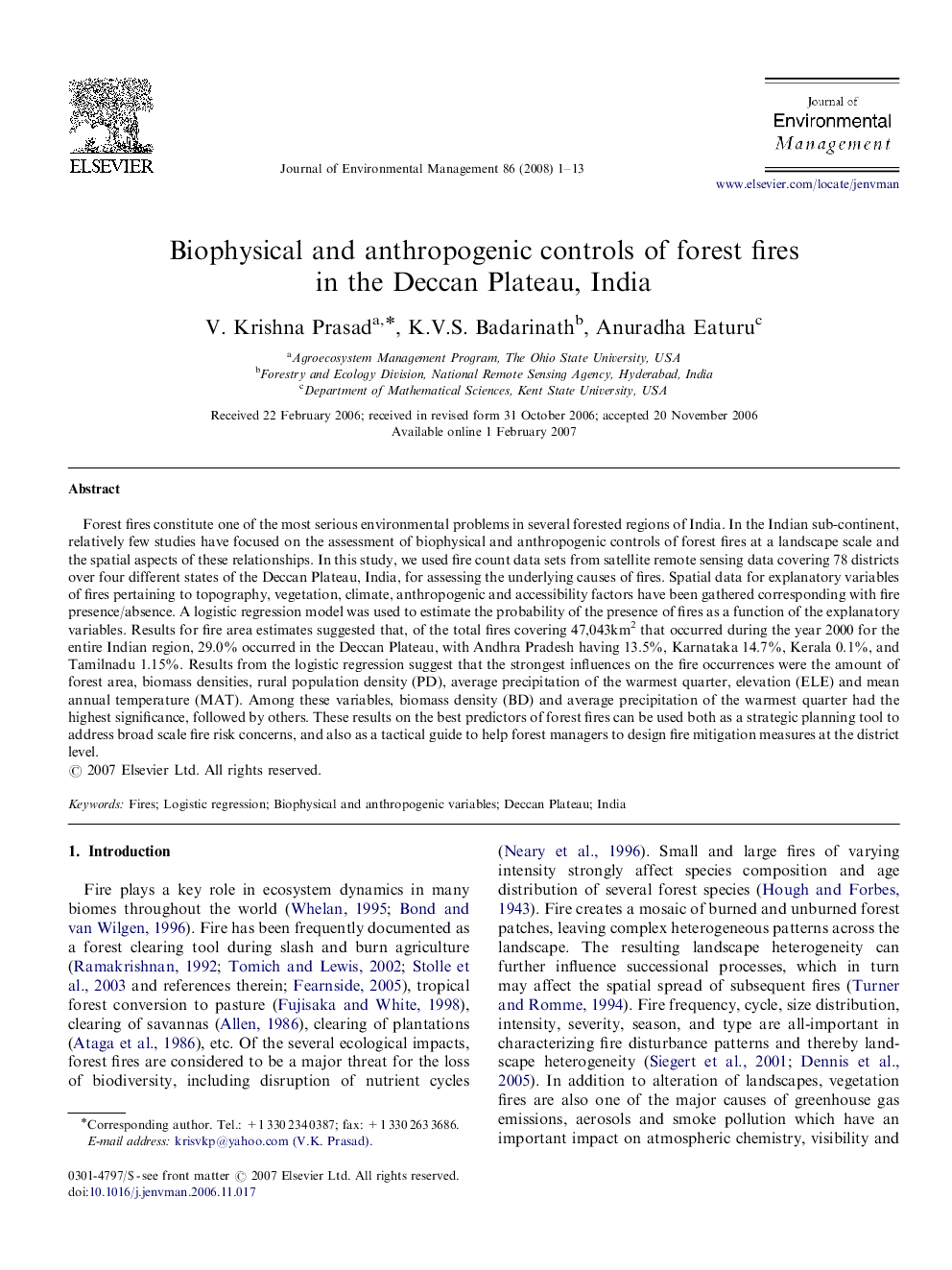| کد مقاله | کد نشریه | سال انتشار | مقاله انگلیسی | نسخه تمام متن |
|---|---|---|---|---|
| 1058359 | 947116 | 2008 | 13 صفحه PDF | دانلود رایگان |

Forest fires constitute one of the most serious environmental problems in several forested regions of India. In the Indian sub-continent, relatively few studies have focused on the assessment of biophysical and anthropogenic controls of forest fires at a landscape scale and the spatial aspects of these relationships. In this study, we used fire count data sets from satellite remote sensing data covering 78 districts over four different states of the Deccan Plateau, India, for assessing the underlying causes of fires. Spatial data for explanatory variables of fires pertaining to topography, vegetation, climate, anthropogenic and accessibility factors have been gathered corresponding with fire presence/absence. A logistic regression model was used to estimate the probability of the presence of fires as a function of the explanatory variables. Results for fire area estimates suggested that, of the total fires covering 47,043km2 that occurred during the year 2000 for the entire Indian region, 29.0% occurred in the Deccan Plateau, with Andhra Pradesh having 13.5%, Karnataka 14.7%, Kerala 0.1%, and Tamilnadu 1.15%. Results from the logistic regression suggest that the strongest influences on the fire occurrences were the amount of forest area, biomass densities, rural population density (PD), average precipitation of the warmest quarter, elevation (ELE) and mean annual temperature (MAT). Among these variables, biomass density (BD) and average precipitation of the warmest quarter had the highest significance, followed by others. These results on the best predictors of forest fires can be used both as a strategic planning tool to address broad scale fire risk concerns, and also as a tactical guide to help forest managers to design fire mitigation measures at the district level.
Journal: Journal of Environmental Management - Volume 86, Issue 1, January 2008, Pages 1–13